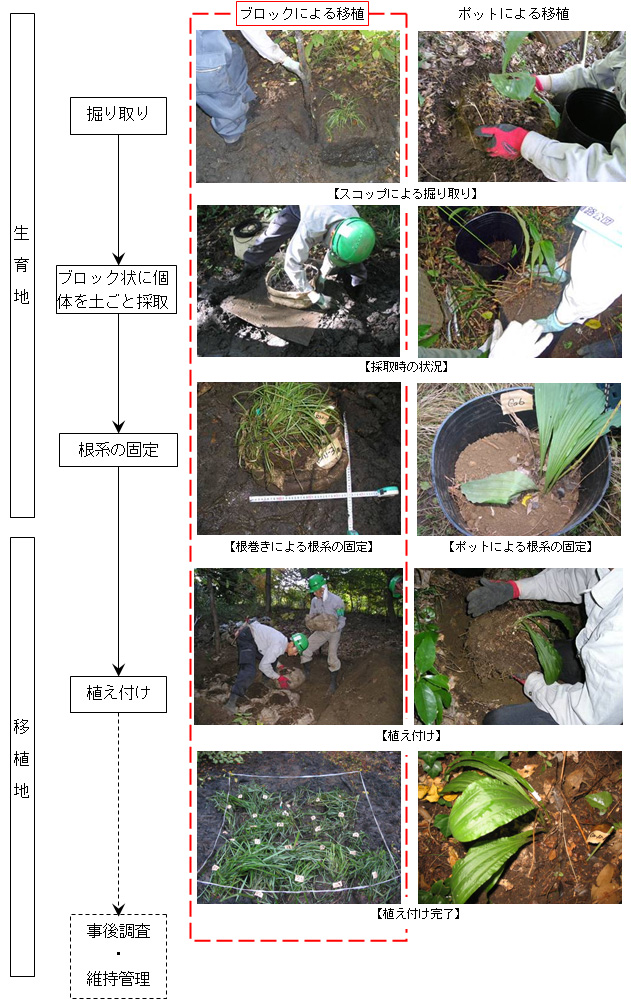"Towards harmony with the natural environment in the Kamari Valley area"
- Corporate Top
- Press Room
- Press Release Kanto Regional Head Office
- "Towards harmony with the natural environment in the Kamari Valley area"
March 30, 2006
East Nippon Expressway Co., Ltd.
Yokohama construction office
The Yokohama Loop South Line (hereinafter, "Yokohama South") is a Yokohama Loop Road that is planned to disperse traffic concentrated in the center of Yokohama City and alleviate chronic traffic congestion in the city. Part of the south side of Kamazawa-ku, Yokohama (Kamari) From town, Totsuka-ku, Kusawa (Gumizawa) It is a motorway dedicated to the extension of about 9km to the town, and the city plan was decided in 1995.
The Kamari Valley area is a region in which the natural environment is relatively well-organized in Yokohama City. I am.
For this reason, East Nippon Expressway Co., Ltd. is advancing the Yokominami South project with the basic policy of conservation, restoration, and creation of the natural environment, and is conducting investigations and examinations in harmony with the natural environment of the Kamariya district. This is where I came.
Since 1996, we have set up the Yokogawa South Natural Environment Study Committee (chairperson: Akira Kameyama, Professor, Faculty of Agriculture, Tokyo University of Agriculture and Technology) to investigate and study by specialists, and to study and study partial transplanting experiments on Humeukigaya. Working on. In addition, in 2000, we will create a “Basic Plan for Conservation and Management of Natural Environment of Kamari Valley Area” to appropriately embody the contents of the survey and examination as a business operator, and reflect it in the construction of Yokominami. It was.
According to press releases in January 2001 and March 2004, the water quality of "Hyotan Pond" and "New Hyotan Pond" which was constructed as an alternative pond were investigated by the previous studies in the partial transplantation experiment of Himeukigaya. -It has been reported that an environment of almost the same quality is formed due to the water volume and the habitation of aquatic animals, and that the growth of the cypress plant is also good.
Since then, we have continued to investigate in the "New Hyotan Pond" and have confirmed that the Himeukigaya plant is currently growing well. We have also confirmed that the environment is almost the same from the habitat of aquatic animals.
Growth condition of new Hyotan pond "Himeukigaya"
The new Hyotan Pond's Himeukigaya has been partially transplanted in March 1999.
As of May 2005, it is growing smoothly as shown in the photo below.
"Growth status of Himeukigaya" (photographed in May 2005)
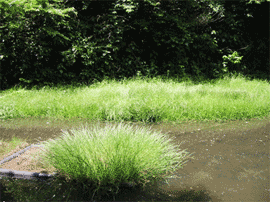
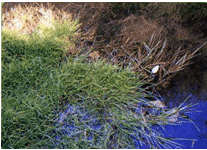
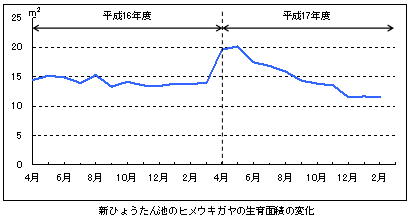
Astragalus vulgaris (Poaceae, Liliaceae)
A perennial that grows on the waterside and underwater of rivers in Hokkaido and Honshu, such as upper to middle watersheds, waterways, and paddy fields.
The culm is elongated and crawls in the water, and the leaves float or float on the surface of the water, and sometimes grow even in a submerged state. The flower season is from May to July. (Reference: 1994 "Japanese Waterweed Encyclopedia", Bunichi General Publishing)
Himeukigaya is ranked as an endangered species (En-E) in the Kanagawa Red Data Biological Survey Report (Kanagawa Prefectural Museum of Life and Earth 1995).
Habitat status of "Hotokedojo" in the Kamariya district
We started a habitat confirmation survey in August 1999 for the hot dog loach in the Kamari valley area, and since then have confirmed its habitat every year.
"Hotoke Dojo"
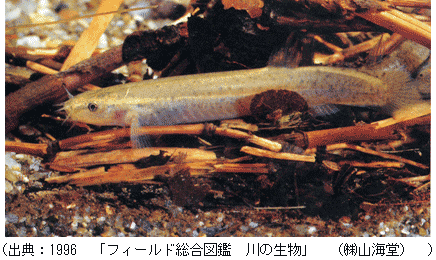
Pokeweed (genus Pleurotus genus)
It is distributed in Honshu (excluding Aomori Prefecture and the western part of Chugoku district) and eastern Shikoku, and resides in paddy fields and lakes. The spawning season is from late March to early June. It will be 4-5 cm (male) or 5-6 cm (female) in a year.
(Reference: 1980 "Primary color Japanese freshwater fish picture book" (Nursing Co., Ltd.))
Partial transplantation experiment of notable species
Based on the opinions received from the Yokohama City Environmental Impact Assessment Committee (to implement appropriate measures such as transplantation of notable species such as citrus cannabis and planting centered on native species), conservation of noteworthy species We plan to carry out transplantation for the purpose of carrying out transplantation experiments on some individuals in 2005.
Regarding transplantation, we have adopted a method of collecting soil in blocks so as not to damage the root system, based on the results of examination by the Yokominami South Environment Study Committee, which includes experts.
- Transplantation period: Late October 2005-early November 2005
- Notable species after transplantation
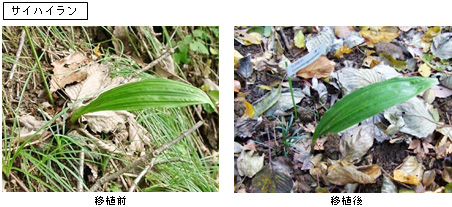
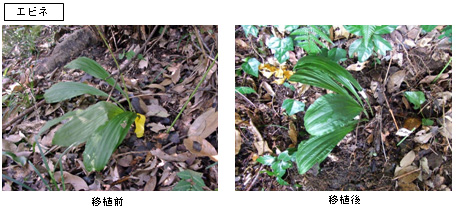
- Contents of porting work
